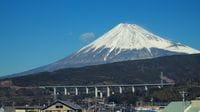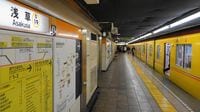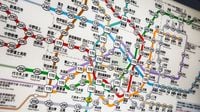
Recent years have seen a proliferation of English-language announcements and signage in the Shinkansen trains and railway stations throughout Japan, in part due to rapidly growing tourisms from abroad. The following is a look at 10 types of English phrases used by railway companies.
Some of the translations use words and phrases not in the original Japanese to avoid word-for-word translations that may confuse, while other translations are courteous to such a degree that they cause misunderstandings. A closer examination of these translations offers a fascinating glimpse into the singular linguistic character of the Japanese language
1. Uchi-mawari and Soto-mawari on the Yamanote Line
Train directions on the JR Yamanote Line, a central Tokyo loop line, are officially expressed as uchi-mawari (counterclockwise) or soto-mawari (clockwise) in Japanese. However, instead of announcing whether a train runs in a clockwise or counterclockwise direction (since it makes sense almost only to the Japanese), announcements for the Yamanote Line simply state where the train is bound, for example, “This is a Yamanote Line train bound for Shinjuku and Ikebukuro.”
2. Choosing Romanizations based on their Japanese pronunciation
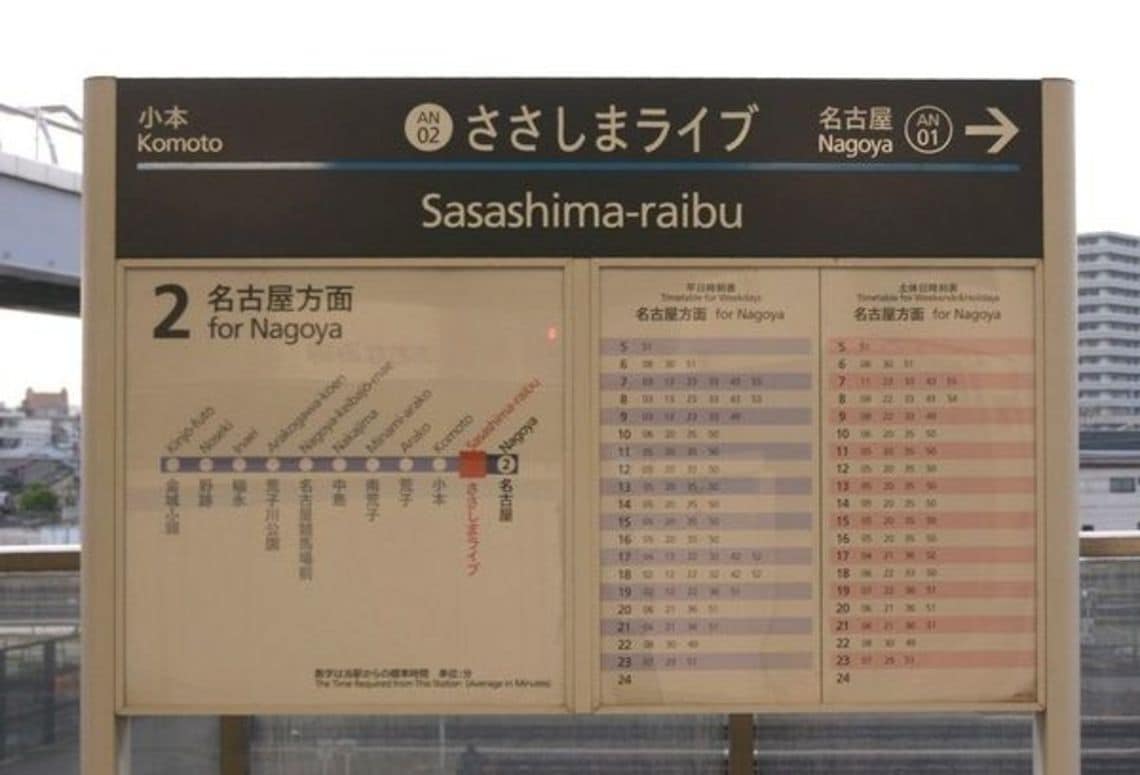
When taking the Aonami Line from its Nagoya Station terminus, the next station one encounters is expressed in English-alphabet characters as "Sasashima-raibu," even though raibu is the Japanese loanword for "live." The nonsensical phrase "Sasashima-live" is likely to confound native speakers of English, making “raibu” the more appropriate choice.
The Meijo Line, a subway line also located in Nagoya, uses the name Sogo Rihabiri Center for one of its station. “Rihabiri” is a shortened version of the loanword for "rehabilitation,” and the station is named after the rehabilitation center nearby. Although "rehabili," which has an “l” instead of an “r,” would be closer to the English-language original, the station name does not use it. One could argue that, because this is a district name, it ought to be kept as “rihabiri” regardless of any resulting awkwardness.
3. "Shinkansen" as an internationally recognized word
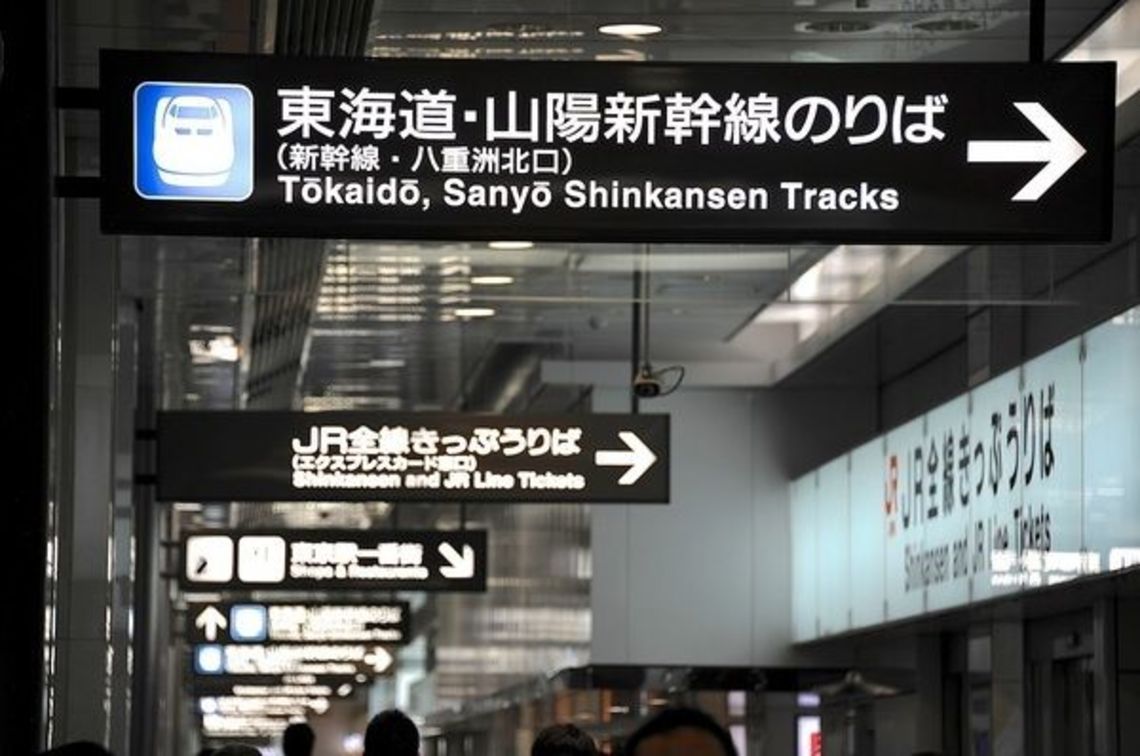
Shinkansen, which refers to Japan's famous high-speed trains, has been used for a long time on English signage, for in-train and in-station English-language announcements, and elsewhere. In the first years after the opening of the Japan's first Shinkansen line, the Tokaido Shinkansen line, "New Tokaido Line" and "bullet train" were used, but Shinkansen ultimately came to be the internationally recognized word.
4. Welcome!
Passengers boarding the JR Central-operated Tokaido Shinkansen are greeted by the phrase "ladies and gentlemen, welcome to the Shinkansen." JR East-operated Shinkansen lines use the slightly different phrasing "ladies and gentlemen, welcome on board the Tohoku Shinkansen." In contrast, Kintetsu limited-express trains use the phrase "thank you for taking the Kintetsu limited express," a more literal translation of the original Japanese.
5. "Superexpress" as another name for Shinkansen
In Japan, express trains that skip certain stops are classified as kyuko, or ordinary expresses, and faster versions that stop even less frequently are known as tokkyu (short for tokubetsu kyuko, which literally translates as "special express"). The latter are commonly referred to as "limited express" trains in English. Aboard the Shinkansen, the fastest train service available, in-train announcements use phrases including "this is the Nozomi superexpress bound for Shin-Osaka," referring to the Shinkansen as "superexpress" trains.
6. Feel free to use your mobile phone on the "deck"...?
It is considered rude to use one's mobile phone while seated in the passenger area. In-car announcements inform customers, "We ask that you switch your mobile phones to silent mode," followed by the request, "If you wish to use your mobile phone, please go to the end sections near the doors."
The original Japanese for the final part of this request is "dekki o go-riyo kudasai," which if translated directly would produce the nonsensical phrase, "please go to the deck [when talking on your mobile phone]." In this case, dekki (deck) is not a loanword; rather, it is what is known as a wasei-eigo, a word that appears to be a loanword but was actually coined in Japan and thus has its own distinct meaning.
In transportation lingo, The English word "deck" usually refers to the deck of a ship, but in Japanese, the phrase dekki can be used to refer to a train's vestibules, the spaces at the ends of each train car that are usually separated from the seating area by doors. However, the phrase "the end sections near the doors" is used instead of the word "vestibules," probably because the latter is unfamiliar to the average English speaker.
7. The next stop is...
When the train is nearing its next stop, an announcement is played, for example, “We will soon make a brief stop at Goryokaku. The stop after Goryokaku will be Shin-Hakodate-Hokuto. Thank you.” This announcement is an example from the Super Hokuto limited express train service and represents the English-announcement pattern commonly encountered on Japanese trains. In such announcements, soon means “in a few minutes,” and a brief stop means “a short stop of 30 to 60 seconds.”
8. Tanoshii go-ryoko o! (Have a nice trip!)
In English, many announcements end with a simple "thank you," but this is rarely the case in Japanese. The Shinkansen operated by JR East use "we wish you a pleasant journey," a smart-sounding phrase I have heard on European trains that serves as the translation for "tanoshii go-ryoko o" (literally, "have a nice trip").
9. Translations of railway company names
In English, JR East is formally known as the East Japan Railway Company and JR West as the West Japan Railway Company. JR Central is actually "JR Tokai" in the Japanese, so one would think it would be officially known as the Tokai Railway Company, but in fact it is called the Central Japan Railway Company.
Coincidentally, the station known as Chubu Kokusai Kuko Eki in Japanese is displayed as “Central Japan International Airport Station” in English. "Chubu" is a region name that means "central Japan." JR Central (in Japanese, JR Tokai) seems to have used this same region name in its English version of its company name.
10. Polite but too wordy
In my experience, English-language announcements in Japan tend to be drawn-out and wordy. Take, for example, the following announcement used on JR Hokkaido limited express trains:
Passengers holding the Japan Rail Pass or Hokkaido Rail Pass but without seat reservations on this train: Please use a car of non-reserved seating. Seats cannot be reserved onboard this train. Cars 6 and 7 are for passengers without seat reservation.
Although the phrasing comes across as courteous, I doubt that many people actually listen to this long-winded announcement in its entirety. In addition, it sounds awkward.
Train services in other countries often use briefer in-car announcements, and announcements also tend to be less frequent. Only in Japan does one encounter seemingly intrusive notifications such as "due to the rainy weather, passengers tend to forget umbrellas and other such belongings when leaving the train."

